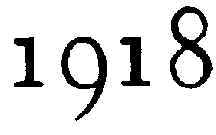
pedro martinez
___________________________
Boston Red Sox 2001
“Pedro and 4 Guys named ‘Other'”?
In The Sporting News 2001 Baseball Magazine, the editors write:
“The Red Sox were thinking about winning the division, not the wild card, when they hired [Manny] Ramirez, but the pitching staff is still Pedro Martinez and a cast of thousands. The wild card is the best they’ll do.”
This statement about Boston’s pitching staff — that without Pedro, the Red Sox rotation is nothing more than a bunch of no-names and journeymen — is a common belief, even among Red Sox fans. But it’s inaccurate and cannot be supported by any reading of the facts.
Here’s why:
There were eight American League teams whose runs allowed per game (RA/G) in 2000 were below the league average of 5.30. Here they are, along with each club’s top starting pitcher. (RA/G includes all runs allowed instead of only earned runs).
| RA/G | IP | RA | Top ERA | IP | RA | |
| Boston | 4.60 | 1452 | 745 | Pedro Martinez | 217 | 44 |
| Seattle | 4.81 | 1441 | 780 | Paul Abbott | 179 | 89 |
| Cleveland | 5.04 | 1442 | 816 | Bartolo Colon | 188 | 86 |
| Oakland | 5.05 | 1435 | 813 | Gil Heredia | 198.2 | 106 |
| New York | 5.06 | 1424 | 814 | Roger Clemens | 204.1 | 96 |
| Detroit | 5.10 | 1443 | 827 | Jeff Weaver | 200 | 102 |
| Chicago | 5.18 | 1450 | 839 | Mike Sirotka | 197 | 101 |
| Tampa Bay | 5.23 | 1431 | 842 | Albie Lopez | 185.1 | 95 |
If we subtract Martinez’s numbers from the Boston staff, we must also remove the numbers of the other teams’ starter with the lowest ERA. When we do that, the eight teams stack up like this:
|
RA/G |
Difference | |
| Seattle | 4.93 | +0.12 |
| Boston | 5.11 | +0.51 |
| Oakland | 5.15 | +0.10 |
| Tampa Bay | 5.18 | -0.05 |
| Cleveland | 5.24 | +0.20 |
| Detroit | 5.25 | +0.15 |
| New York | 5.298 | +0.24 |
| Chicago | 5.301 | +0.12 |
Yes, Boston suffered the largest increase in RA/G (more than double New York’s), but even without Martinezs historic 1.74 ERA, the Red Sox still finish second in the league.
With Martinez gone, Boston needs someone to pitch those 217 innings. Let’s give the Red Sox a “replacement-level pitcher,” which STATS, Inc. defines as a pitcher with an ERA one full run higher than the league average — which for 2000 would be 6.30 runs allowed per nine innings.
If that pitcher — call him Joe Scrapheap — worked all of Martinezs innings, he would allow 151 runs — 107 more runs than Martinez gave up. If we add those 107 runs to Bostons total, the RA/G shoots up to 5.28, a little better than league average.
But of course, most teams would not give a starter with a 6.30 ERA that many innings of work. [Also, Boston, like most teams, would probably be able to find a better solution.]
So lets say Scrapheap went only five innings every time out. If he made 29 starts (as Martinez did in 2000), he would pitch 145 innings and allow 101 runs. The other 72 innings would be pitched by the Red Sox bullpen, which had an ERA of 3.86 — a league-leading bullpen ERA that Pedro had nothing to do with.
With that ERA, the bullpen would allow 31 runs in those 72 extra innings.* Now the Scrapheap/bullpen combo — pitching a total of 217 innings — has allowed a total of 132 runs and posted an ERA of 5.47. Putting those numbers into the Pedro-less Boston staff, we get this:
| IP | RA | RA/G |
| 1452 | 833 | 5.16 |
Which would have been above the league average and good enough for 6th place in the A.L. — even if all the other teams had kept their top starters.
But if Martinez is not in the league, the cumulative American League totals have to be adjusted also. When we replace Martinezs numbers with the Scrapheap/bullpen performance, the league RA/G rises from 5.30 to 5.40.
Bostons adjusted RA/G with Scrapheap replacing Pedro would be 0.24 lower than the league average (5.40 – 5.16).
By coincidence, that is the exact difference between the New York Yankees 2000 pitching staff and the real-life A.L. average (5.30 – 5.06).
Therefore: The 2000 Boston pitching staff with a waiver-wire pickup instead of Pedro Martinez = the 2000 Yankees pitching staff (which has been widely touted as one of the main forces behind the team’s three consecutive World Series titles).
Calling Boston’s staff “Pedro and 4 Guys named Other” may be accurate as far as name-recognition goes, but it bares absolutely no relation to their actual performance.
Why sportswriters and others in the media keep perpetuating this myth when the evidence is widely available is a mystery.
* Wouldn’t that extra work put a strain on the bullpen? Okay, let’s make their performance in those 72 innings one run higher than their usual rate for the season (4.86 ERA). Now Boston’s staff trails the Yankees’ staff by an ERA of 0.05. That works out to 8 runs over the course of a 162-game season — or approximately one extra run allowed every 182 innings.
2001 Allan James Wood
Back to Home
� 1997-20243 by Allan Wood.